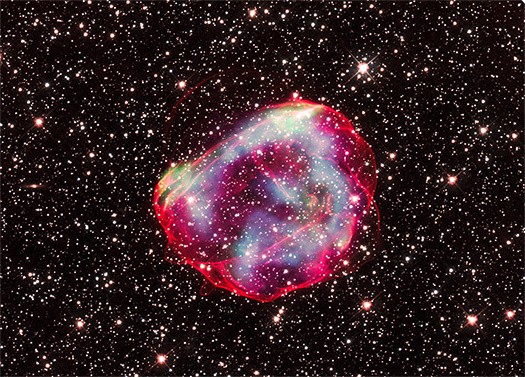A new research decided to take a deep dive into learning more about thermonuclear explosions in space, particularly with the white dwarf star which exploded hundreds of years ago, in a faraway region. The SNR 0519-69.0 or SNR 0159 is a known remnant of a former dwarf star in a small galaxy region far from the planet, with its present surveys helping bridge a discovery for astronomers.
Supernova Timeline Discovered by Astronomers

A Supernova timeline is often unknown to the world, especially as most ones happened long ago, even before the time of the early humans who formed initial civilizations on the planet. However, researchers were able to find a way to map out this phenomenon and able to determine it in Earth's time, giving context to what led to its eruption into different elements and materials in space.
According to a release by NASA's Chandra X-ray Observatory and the researchers behind this new study, said that the blast wave from the explosion range from about 3.8 million to 5.5 million miles (9 million kilometers) per hour.
Traveling at the faster rate in the estimates would have made the supernova visible 670 years ago, but the researchers said that it was more recent, only happening several hundreds of years back. The light may have traveled slower, giving researchers a chance to know its timeline.
Read Also : AI Technology Detects 11 New Space Anomalies
Thermonuclear Explosion Study
A study published in The Astrophysical Journal entitled "Evidence for a Dense, Inhomogeneous Circumstellar Medium in the Type Ia SNR 0519-69.0" brings a significant look at thermonuclear explosions from a past supernova in space.
This new study aims to explain the many mysteries behind supernovas and humongous explosions, particularly with its timeline in the Earth's time, as well as its proximity to the planet. Researchers were able to see this via Chandra and Hubble, as well as NASA's retired Spitzer Space telescope.
Supernova in the Universe
Studies about supernovas are massive on the planet now, especially as astronomers try to explain the massive phenomenon in space and gain significant information regarding how it happens. A possible Type II supernova in the universe was the center of one study, something which the researchers aim to understand how and why it happens.
Supernovas create a good background image for a computer or phone because of their colorful display caught on telescopes and x-rays from previous studies, but that is not all there is to it. NASA's Hubble is one of the most capable to detect and capture supernovas with its instruments and cameras, something which contributes to further research regarding it.
Sci-fi clips may provide background on supernovas but they are only one piece of information or piece of the puzzle than what is going on in space. It is why there are researchers which pursue the study of these phenomena and share it with the world for more knowledge on the happening.
The SNR 0519 remains and debris brings much information about what it used to be, and how it came to be in the present.
Related Article : Australian Supercomputer Produces Image of a 'Golden Supernova's Remnant' With Gorgeous Details!
This article is owned by TechTimes
Written by Isaiah Richard
ⓒ 2025 TECHTIMES.com All rights reserved. Do not reproduce without permission.




